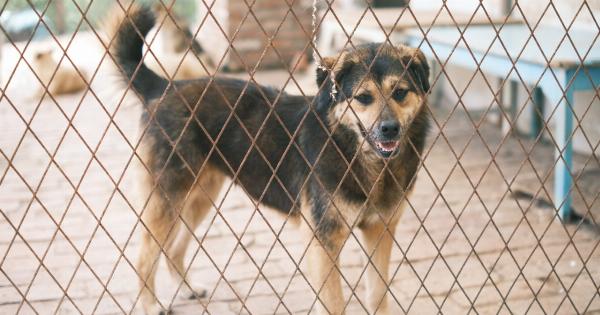It can be frustrating and sometimes concerning when your dog starts grumbling. The growls, barks, and other vocalizations may leave you wondering what your furry friend is trying to convey.
However, by learning to crack the code of your dog’s grumbling communication, you can better understand their needs and respond accordingly. This article will delve into the various reasons behind dog grumbling and provide insights on how to decode their messages.
1. Identifying the Different Types of Grumbling
Grumbling is a catch-all term for various vocalizations, ranging from low rumbling sounds to intense barking. By understanding the different types of grumbling, you can better decipher what your dog is communicating.
Some common types of grumbling include:.
2. The Warning Growl
One common form of grumbling is the warning growl. This type of grumble typically occurs when your dog feels threatened or uncomfortable in certain situations.
The warning growl serves as a means to communicate their unease and express a desire for the perceived threat to back off. It’s crucial to listen to this type of grumble and take immediate steps to remove your dog from the triggering situation.
3. The Playful Grumble
Not all grumbling is negative or threatening. Dogs also use grumbling as a playful means of communication. The playful grumble is often accompanied by wagging tails and a relaxed body language.
It’s their way of inviting you or their fellow canine friends to join in the fun. Understanding this type of grumble helps foster a stronger bond with your furry companion and allows you to participate in their joyful moments.
4. The Attention-Seeking Grumble
Just like humans, dogs sometimes grumble to get attention. The attention-seeking grumble typically occurs when your dog is bored or in need of interaction. By grumbling, your dog is signaling their desire to engage in some sort of activity or playtime.
Ignoring this grumble may end up exacerbating their behavior, so it’s important to respond positively and provide them with the attention they seek.
5. The Frustration Grumble
Dogs may also grumble out of frustration or annoyance. This type of grumbling often occurs when they encounter obstacles or face difficulties in achieving their goals.
For example, if your dog is unable to reach their favorite toy, they may express their frustration through grumbling. Recognizing this grumble can help you identify potential issues and create a more comfortable environment for your pet.
6. The Protective Grumble
When your dog grumbles to protect something, it’s essential to pay attention. This type of grumble often occurs when someone or something approaches what your dog considers their territory, possessions, or family.
The protective grumble is a warning sign, indicating that your dog feels the need to defend their space or loved ones. It’s crucial to assess the situation carefully and ensure your dog feels safe and secure.
7. Environmental Factors and Grumbling
Understanding the potential environmental triggers for your dog’s grumbling can further aid in effective communication. Some common factors that may influence your dog’s grumbling behavior include:.
8. Health Issues and Grumbling
It’s essential to remember that grumbling can also be a sign of underlying health issues.
If your dog suddenly starts grumbling excessively or exhibits other behavioral changes, it’s recommended to consult a veterinarian to rule out any potential medical conditions or discomfort. Physical discomfort can cause dogs to grumble as a way of expressing pain or discomfort.
9. How to Respond to Your Dog’s Grumbling
Responding appropriately to your dog’s grumbling is vital for maintaining a healthy and harmonious relationship. Here are some essential tips to help you navigate your dog’s grumbling:.
10. Seek Professional Help
If you find it challenging to understand or effectively address your dog’s grumbling behavior, it’s a good idea to seek professional help.
A certified dog behaviorist or trainer can assess your dog’s individual situation, provide tailored advice, and teach you specific techniques to manage and modify their grumbling behavior.





























